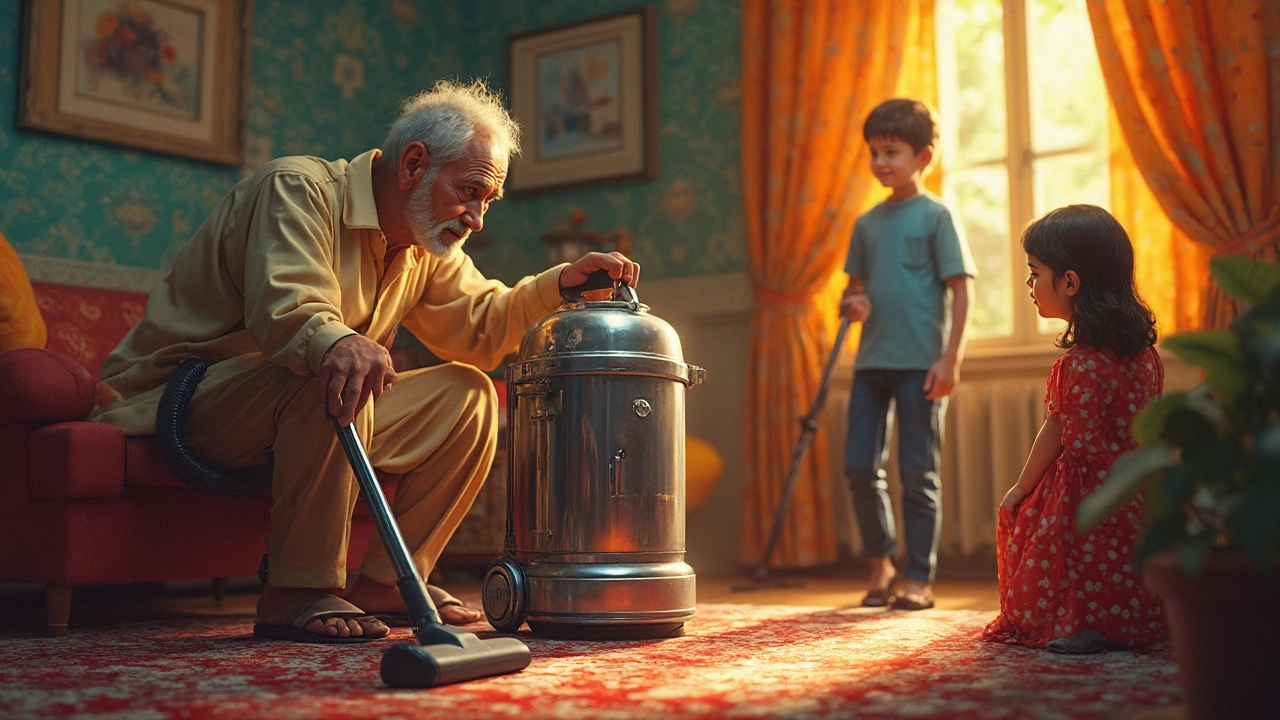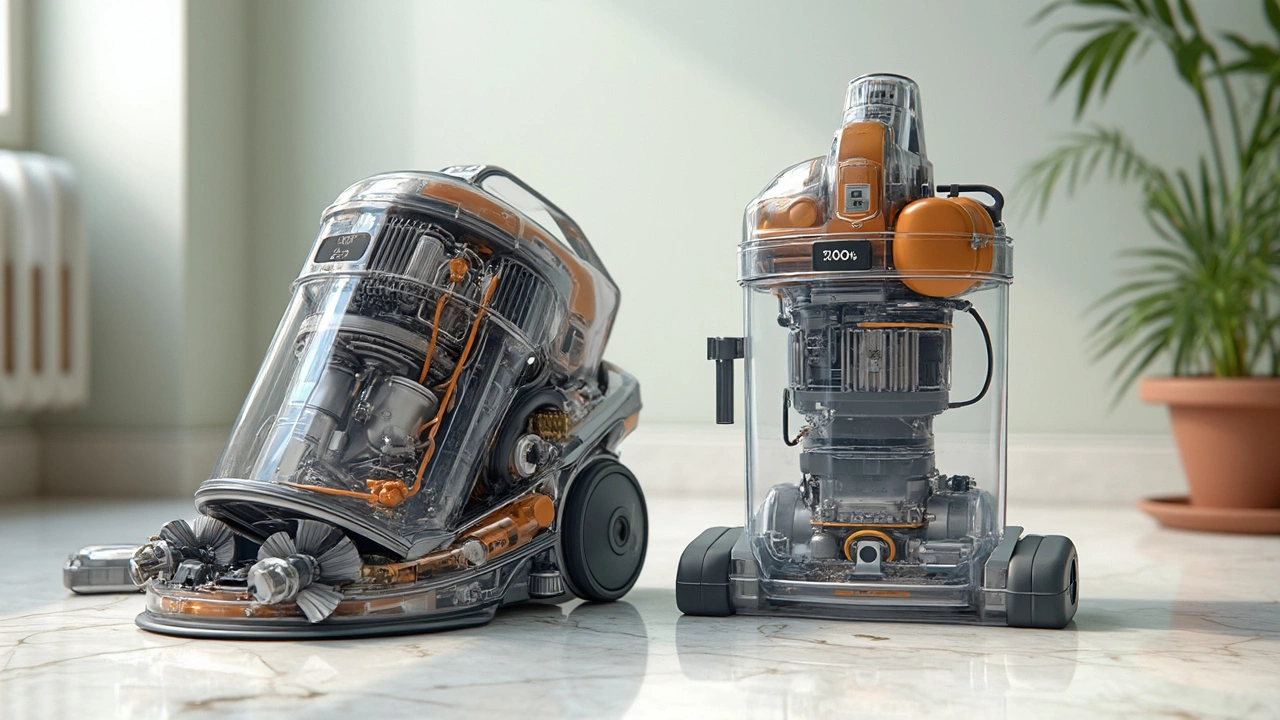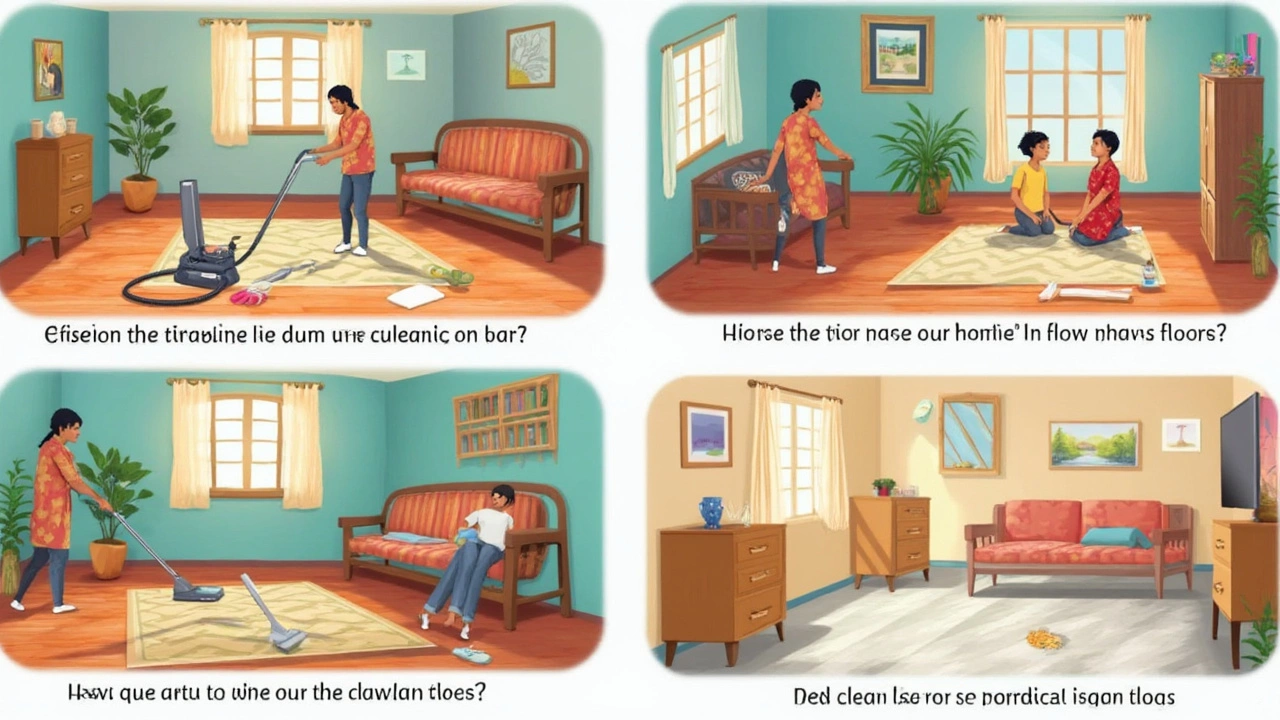
Ever wonder why your grandma’s beat-up vacuum still runs like a champ, while the fancy new one you just bought fizzled out after two years? There’s a reason some people hunt down old vacuums on Craigslist, or refuse to get rid of their ancient machines. But does older really mean better, or are we just feeling nostalgic?
If you’re thinking about swapping your vacuum, don’t toss your classic model just yet. It might have more going for it than you think—like metal parts that last, simple buttons that never break, and motors that sound like they mean business. But there’s a flip side, too. Some older vacuums can be energy hogs, weigh more than your dog, or come with bags you can’t find anymore.
Before you ditch your relic or start scouring thrift shops for a vintage find, let’s break down what you should actually look for. Whether you want suction that pulls up sand from carpets or a machine that’ll survive decades of dust bunnies, knowing the real story will save you time, money, and a lot of frustration.
- Build Quality: Then vs. Now
- Suction Power and Cleaning Performance
- Maintenance and Repairability
- Hidden Drawbacks of Older Models
- When Is an Older Vacuum Worth It?
Build Quality: Then vs. Now
If you ever picked up an old Hoover or Electrolux, you probably noticed how solid it feels—like you could drop it down the stairs and it would still work. Those older vacuum cleaners were built using a lot of metal and high-grade plastics, and some even have motors that rumble instead of whine. Flip to today, and most shelves are lined with light plastic models that are easier to lift but sometimes feel flimsy.
Back in the 1970s and 1980s, brands like Kirby, Royal, and Eureka made vacuums with steel cases, metal fans, and brush rollers you could rebuild. Even the wheels were made to last. Pick up a 30-year-old Kirby, and you'll quickly see the difference compared to a new, all-plastic stick vac. There was a reason vacuums used to be handed down from parents to kids instead of replaced every five years.
Here's a quick look at some real differences in build quality:
| Feature | Older Vacuums | Newer Vacuums |
|---|---|---|
| Body Material | Metal, thick plastic | Lightweight plastic |
| Motor Type | Large, heavy-duty (AC motors) | Compact, energy-saving (often DC motors) |
| Repairability | Easy to open, parts often available | Lots of glued parts, fewer user-replaceable components |
| Lifespan | 15-30 years (or more with care) | 5-8 years average |
| Weight | 10-25 pounds | Under 10 pounds |
One big reason for shorter lifespans now? Costs and consumer habits. Manufacturers realized that cheaper plastic parts and throw-away designs mean more people will buy replacements sooner. That’s not all bad—lighter vacuums are easier for everyone to use, and if you hate dragging a 20-pound beast up the stairs, newer options are a dream.
If you value a machine that can take a beating and last for decades, it’s tough to beat those beefy, old-school models. On the other hand, today's lightweight designs definitely win for convenience. It really comes down to what matters more in your house: serious durability, or less hassle when you haul your vacuum around.
- If you're buying used, always check for rust in the metal and frayed cords. Old doesn't always mean reliable if it's been mistreated.
- Original replacement bags and belts are still available online for many older machines. Just double-check the model number before you buy.
- For shops and large homes, that "indestructible" vibe from old vacuums still pays off. For quick, upstairs jobs, you might want something newer and lighter.
If your main priority is older vacuum cleaners that last, focus on models from the big names from decades past—but always take a peek under the hood before bringing one home.
Suction Power and Cleaning Performance
If there’s one thing people remember about older vacuums, it’s how much grit those machines could suck up. Back in the day, brands like Kirby and Hoover built vacuums with powerful motors—sometimes clocking in at 12 amps or more. Many units came with metal fans instead of plastic, so they could tackle things like hair, larger debris, and sand without choking or breaking a fin.
But it’s not just about motor power. Older vacuums often used durable direct-drive systems—meaning less energy gets lost, so more turns into actual cleaning muscle. If you’ve ever used a vintage vacuum on a thick rug, you might’ve noticed it sounds like a jet taking off and leaves visible lines behind. That’s not nostalgia—it’s real suction and brush power at work.
Here’s where things get interesting: higher amps or watts don’t always mean better suction. Some old-school machines had basic airflow paths, which let them focus all their power on one small area. By comparison, today’s quieter, energy-saving models often spread airflow around for whole-house cleaning, trading a bit of deep-pile power for easier handling.
Bagged models from the 70s and 80s could fill up almost completely before suction started to drop. Modern bagless vacuums release power as soon as their containers start to get full. And newer machines usually come with HEPA filters and seals that keep more dust trapped, but these can make airflow less direct, slightly reducing suction at the floor.
- If you’re battling thick carpets, pet hair, or sand, that old vacuum might just outperform a sleek new model—especially with a fresh bag and no blockages.
- For hard floors or area rugs, newer vacuums with adjustable suction and better filters usually do a cleaner job with less noise and effort.
The bottom line? If pure muscle is what you want, nothing beats a well-cared-for classic. But if you need versatility, allergen filtering, and easy emptying, new is probably the way to go. Whatever you choose, keep your older vacuum cleaners maintained and you’ll squeeze every last bit of cleaning power out of it.

Maintenance and Repairability
Fixing up an old vacuum is a completely different story compared to modern models. Most older vacuum cleaners are built to be taken apart, cleaned, and put back together by regular folks—not just by repair techs with a mountain of specialized tools. If you know how to use a screwdriver, you’ve got a good shot at handling basic repairs yourself.
Inside vintage models, you’ll usually find familiar stuff: metal screws, tough plastic or steel parts, and hardly any electronics. This means fewer things break, and when they do, you can actually get to them. For example, changing a belt, roller brush, or switch on a 20-year-old Hoover or Electrolux often takes ten minutes. No hidden screws. No panels that snap off and never fit right again.
There’s a downside, though. Finding authentic replacement parts can feel like a treasure hunt, especially for brands that disappeared. Sites like eBay or dedicated vacuum forums are lifesavers for rare brushes, bags, or motors. Pro tip: Always check to see if basic consumables (like filters and belts) are still being made before you decide to keep or buy an old machine.
Check out how older vacuums compare to newer ones when it comes to common repair jobs:
| Repair Job | Older Vacuums | Newer Vacuums |
|---|---|---|
| Belt replacement | Usually simple, tool-free | Can require disassembly, specialty parts |
| Brushroll cleaning | Remove cover, pop out brush | Multiple screws, sometimes non-removable |
| Motor access | Phillips screwdriver does the trick | Often sealed, can void warranty |
| Bag/filter finding | May need aftermarket sources or bulk buying | Widely available (for current models only) |
One thing people love about those classic older vacuum cleaners: They don’t end up in the dump just because a tiny switch broke. Some folks even use the same vacuum for 30+ years with just basic DIY fixes. If you’re handy—or want to learn—going old-school can save you serious cash and waste.
Hidden Drawbacks of Older Models
Old vacuums get a lot of hype for being tough, but there's a laundry list of problems you can't ignore. First off, those sturdy metal parts make them heavy—sometimes too heavy to lug up stairs or around tight corners. A typical full-size vintage vacuum can weigh between 15 and 25 pounds, compared to many new models that come in around 8-10 pounds. That’s a big deal if you’ve got back problems or multi-story living.
Replacement parts for these older machines are another headache. Belts, bags, filters—some are completely out of production. If a motor goes out, you might find yourself searching sketchy online stores or eBay listings for months. Even if you score a replacement, it can take DIY skills (and oddball screwdrivers) to install anything.
The energy use on older models is also nothing to sneeze at. Most were built before energy efficiency standards were set. Check out these average numbers:
| Vacuum Type | Average Wattage (Older) | Average Wattage (Modern) |
|---|---|---|
| Upright (Pre-2000) | 1200-1800W | 700-1200W |
| Canister (Pre-2000) | 1000-1600W | 600-1000W |
Not all older vacuums offer HEPA filtration, either. A lot just blow fine dust back into the room, which is a dealbreaker if anyone in your house has allergies. Safety features like automatic cord retractors or shutoff switches for overheating? Don’t count on it. And yeah, many need those big paper bags, sometimes only found at specialty shops or expensive online listings.
- Harder to maneuver in small spaces or on stairs
- Noisy—some early models roar up to 90 decibels, louder than a blender
- Usually higher maintenance (frequent belt and brush replacements)
- Spare parts can be rare and costly
- No modern features like smart sensors or LED headlights
So before falling for the charm of an old-school machine, weigh your needs. The older vacuum cleaners may offer strength, but they rarely come without a few headaches attached.

When Is an Older Vacuum Worth It?
If you’ve got an old Hoover, Electrolux, or Kirby stashed in your closet, you might be sitting on a cleaning goldmine. The truth is, some older vacuum cleaners really hold their own against today’s flashy models—sometimes even outlasting them by years. But before you pat yourself on the back, it pays to know exactly when an older machine is a smart bet.
First, check if it still pulls strong suction. A lot of older machines used metal fans and thick, powerful motors that were built for punishment. If you turn it on and it’s still got enough suction to pick up coins or dirt from deep carpets, you’re in good shape. That old-school build wasn’t just for show; it’s why some people swear their 1980s vacuums work better than anything you can buy new today.
Next, look at repair options. One of the biggest perks with older vacuums is their fixability. Most used common parts, simple screws, or easy-to-replace belts and motors. YouTube’s full of guides for swapping everything from cords to brushes, especially on models from brands like Oreck, Eureka, and Royal. If your machine fits that bill, you’re set for cheap repairs. That’s a huge win for anyone sick of tossing a vacuum after a tiny plastic hinge breaks.
- older vacuum cleaners often last longer if you keep up simple maintenance—changing bags or cleaning filters actually goes a long way here.
- If you mostly vacuum thick rugs or wall-to-wall carpet, a heavy old model might still be your best friend. Those motors were designed to handle tough messes and heavy use.
- It’s extra handy when you can still find replacement bags, belts, or filters for your specific make, either online or at specialty stores.
But there are times when an old vacuum just isn’t worth the headache. If replacement parts are impossible to track down, or if your machine needs a fix that costs more than a decent new model, you’re better off moving on. The same goes if it’s so heavy that you dread lugging it upstairs, or if it’s missing modern extras you really want, like HEPA filters.
In short, hanging onto—or buying—an older vacuum is smart if it’s a sturdy, serviceable model that can be kept running on the cheap. For die-hard carpet cleaning or people who don’t mind a little weight, the classics pack real muscle. Don’t get stuck on brand new just because it looks sleek. Sometimes a battle-scarred vacuum is actually the best tool for the job.